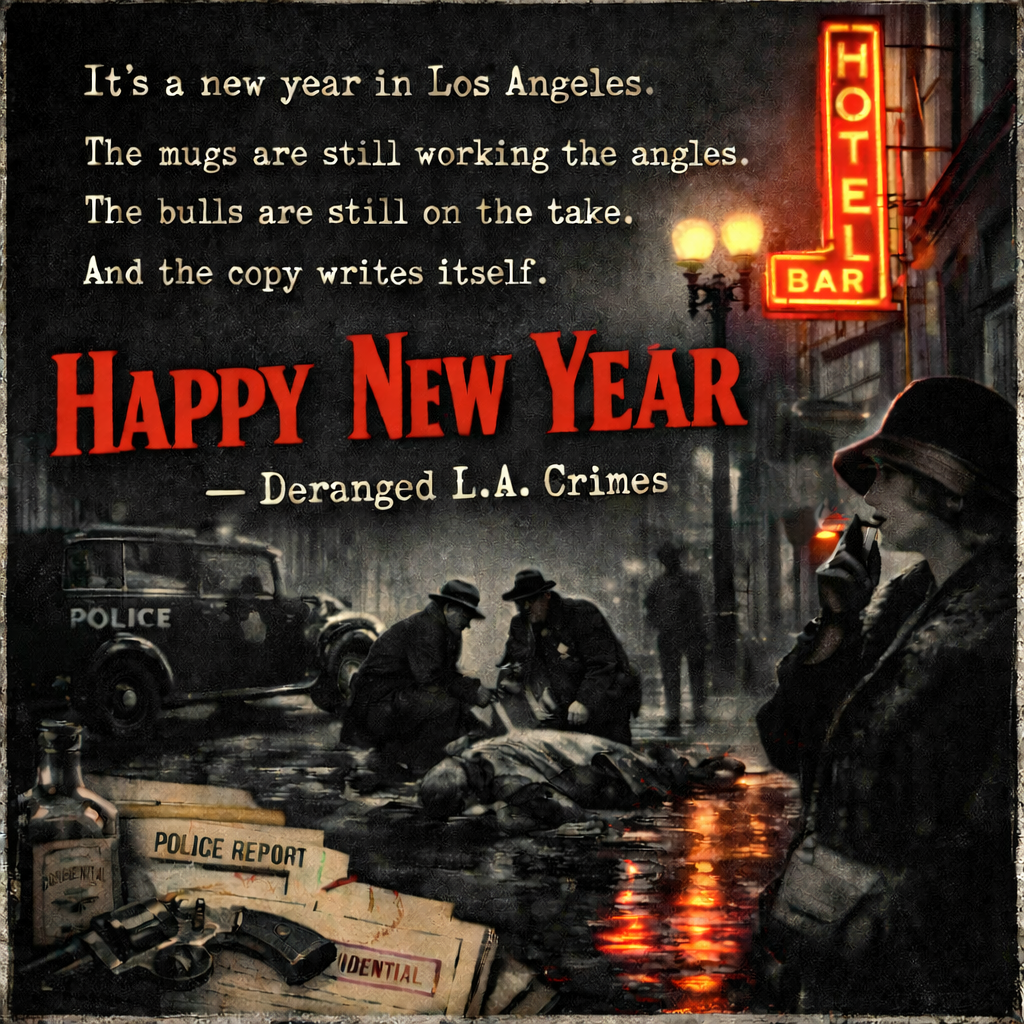
Happy New Year!



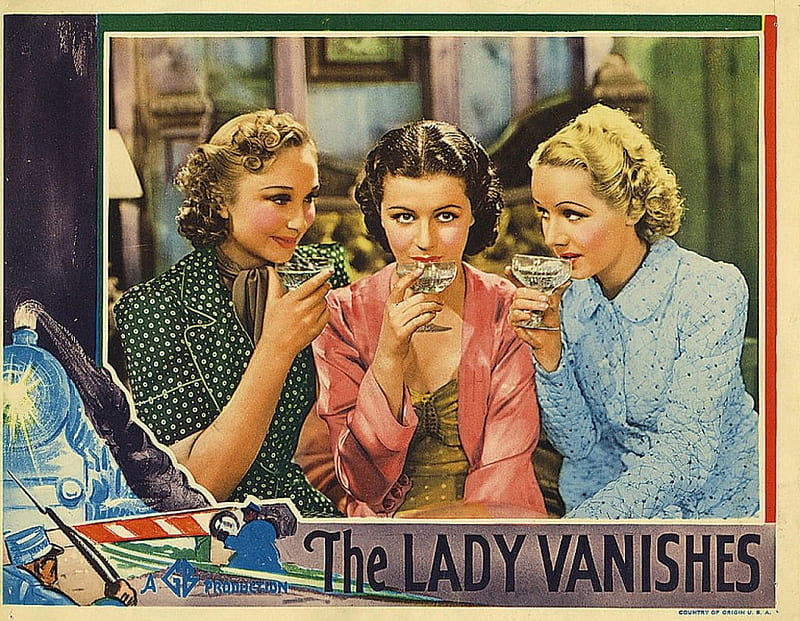
Welcome! The lobby of the Deranged L.A. Crimes theater is open. Grab a bucket of popcorn, some Milk Duds and a Coke and find a seat.
Because today’s post (THE LOWER 13th MURDER CASE) is about a crime that occurred on a train, I thought I’d pair it with one of my favorite movies, THE LADY VANISHES. It is a nifty Hitchcock thriller from 1938, starring Margaret Lockwood, Michael Redgrave, and Dame May Whitty. Two of the film’s incidental characters, Charters and Caldicott, who are mad for cricket, were featured in a 1985 BBC television series.
I love this movie — I hope you’ll enjoy it!
TCM says:
Aboard a train bound for London, Miss Froy, an elderly English governess, makes the acquaintance of young Iris Henderson. When Miss Froy disappears, Iris asks for the other passengers’ assistance in finding the old woman, only to have all contend that Miss Froy was never on the train.
At 20-years-old, Robert Schoengarth could have kicked heroin and started over. But heroin is a hard habit to break. Heroin attaches to opioid receptors in the brain and nervous system, like natural endorphins, so the brain adapts with regular use. Getting clean isn’t a matter of willpower. You are fighting your altered chemistry. Withdrawal from heroin, while not often life-threatening, can be so painful you pray for death.
In September 1957, Robert married June Leach in Las Vegas. They had a daughter, but the marriage didn’t last. We can only speculate about what drove them apart.
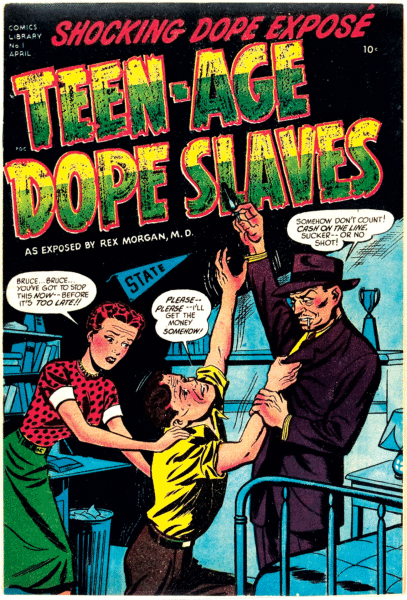
From the time he was a teenager, Robert moved between California and Colorado. He had trouble with the law in both places.
In January 1963, an anonymous tip alerted the LAPD’s Hollywood division that Colorado wanted Robert for felony robbery and theft. They busted him near Klump Avenue and La Maida Street in North Hollywood. 6
Robert confessed to stealing from a Ventura Boulevard business after his arrest for suspected burglary. He had drugs on him—a vial with 45 pink pills in it. He told officers he came to North Hollywood to score dope.
Robert’s brother, William, had his own problems. In 1956, Burbank police arrested William and two other men for burglarizing an Apple Valley men’s clothing store on New Year’s Eve, 1955. Zeke Eblen, chief of detectives for the San Bernardino Sheriff’s Office, said the men stole expensive suits, sports jackets, and other clothing, which they took out a side door and loaded into a car.
Like Robert, William’s heroin addiction caused his troubles. In court on the burglary charges, he pleaded guilty and admitted to being an addict. Assistant County Probation Officer Merle Kay, said William was, “resigned to a life of institutional care without hope of rehabilitation or permanent treatment for his addiction.” All his previous attempts to get clean failed. He told Kay he would try to quit the habit if given probation, but confessed he had said the same thing a “thousand times” before.

In July 1967, police arrested William and his wife, Gloria, in Fort Worth, Texas, for forgery after a state computer detected a fake check they had tried to cash.
Working together, Robert, William, Robert’s wife Connie Sue, and an accomplice, George Pauldino, landed in U. S. District Court in Denver for passing stolen savings bonds in banks in Colorado Springs and Boulder.
According to U.S. Assistant Attorney Theodore Halaby, the group cashed some of the $200,000 worth of bonds they stole on December 12, 1971, from the safe of the Denver Public Administrator.
The brothers spent most of the 1970s either in court or prison.
The Schoengarth brothers paid a terrible price for making a dumb mistake as teenagers. Their addictions were a prison without walls. Reading between the lines, I realize they struggled to lead normal lives.
I’ve had many friends grapple with addiction. Several of them died of an O.D. Smart, funny, talented, each one had so much to give. I will never stop missing them.
Robert died in 1988, and William passed in 2005. The brothers may never have realized their potential, but I bet family and friends who saw the best in them mourn them still.
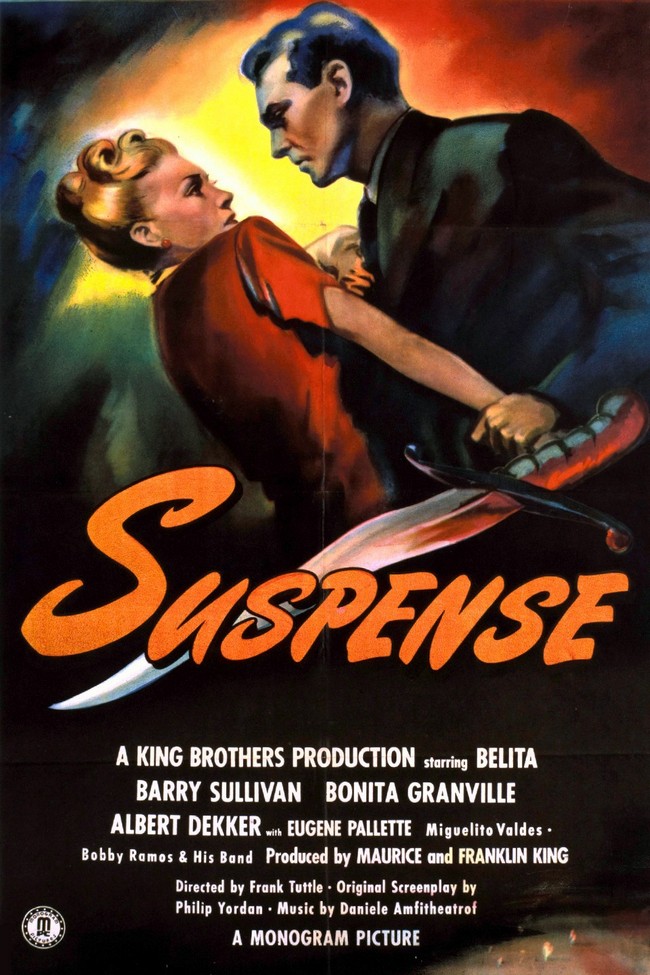
Welcome! The lobby of the Deranged L.A. Crimes theater is open! Grab a bucket of popcorn, some Milk Duds and a Coke and find a seat. Tonight’s feature is SUSPENSE (1946), starring Belita, Barry Sullivan, and Bonita Granville.
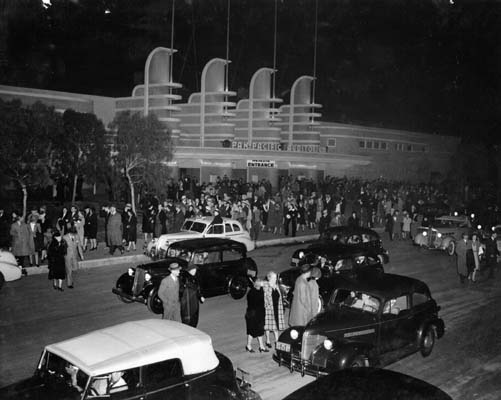
If you love ice skating, this is the noir for you! Belita participated in the 1936 Olympics. One thing I like about this film is the great views of the late, lamented Pan Pacific Auditorium–an Art Deco masterpiece.
Enjoy the movie.
TCM says:
After leaving New York under suspicious circumstances, Joe Morgan gets a job in Los Angeles with ice skating impresario Frank Leonard. Joe is attracted to beautiful Roberta Elva, the star of the show and Frank’s wife. Although Roberta does not encourage Joe’s interest, he pays close attention to her performance and suggests that she liven up the act by jumping through a hoop of knives. Frank is impressed enough with the idea to offer Joe a position as his assistant. When Frank travels to Chicago to buy another ice rink, he leaves Joe in charge of the business.
This month is an important one for the Deranged L.A. Crimes blog. It is the twelfth anniversary of the blog.
December 17, 2012 (the 110th anniversary of the birth of the woman whose career and life inspires me, Agness “Aggie” Underwood) I created the blog. I also authored her Wikipedia page, which was long overdue. I felt it was important to honor her on the anniversary of her birth. I’ve been trying to keep her legacy alive ever since.
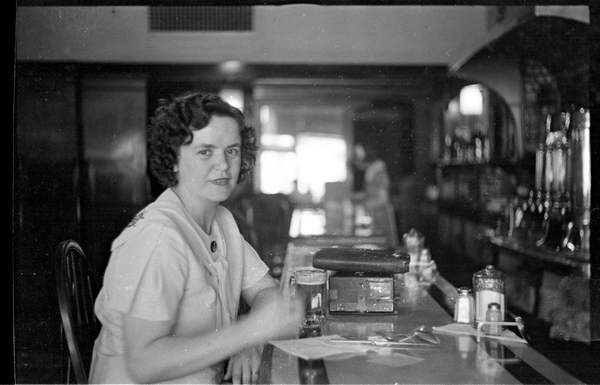
By the time I began, Aggie had been gone for twenty-eight years. I regret not knowing about her in time to meet her in person. But, through her work, and speaking with her relatives over the years, I feel like I know her. I have enormous respect for Aggie. She had nothing handed to her, yet she established herself in a male-dominated profession where she earned the respect of her peers without compromising her values. She also earned the respect of law enforcement. Cops who worked with her trusted her judgement and sought her opinion. It isn’t surprising. She shared with them the same qualities that make a successful detective.
Aggie never intended to become a reporter. All she wanted was a pair of silk stockings. She’d been wearing her younger sister’s hand-me-downs, but she longed for a new pair of her own. When her husband, Harry, told her they couldn’t afford them, she threatened to get a job and buy them herself. It was an empty threat. She did not know how to find employment. She hadn’t worked outside her home for several years. A serendipitous call from her close friend Evelyn, the day after the stockings kerfuffle, changed the course of her life. Evelyn told her about a temporary opening for a switchboard operator where she worked, at the Los Angeles Record. Aggie accepted the temporary job, meant to last only through the 1926-27 holiday season.

Aggie arrived at the Record unfamiliar with the newspaper business, but she swiftly adapted and everyone realized, even without training, she was sharp and eager to learn. The temporary switchboard job turned into a permanent position.
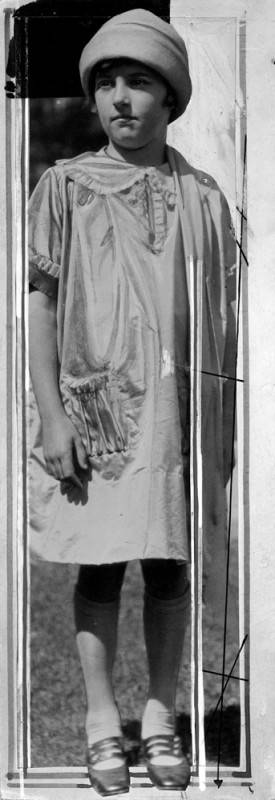
In December 1927, the kidnapping and cruel mutilation murder of twelve-year-old schoolgirl Marion Parker horrified the city. Aggie was at the Record when they received word the perpetrator, William Edward Hickman, who had nicknamed himself “The Fox,” was in custody in Oregon. The breaking story created a firestorm of activity in the newsroom. Aggie had seen nothing like it. She knew then she didn’t want to be a bystander. She wanted to be a reporter.
When the Record was sold in January 1935, Aggie accepted an offer from William Randolph Hearst’s newspaper, the Evening Herald and Express, propelling her into the big leagues. Hearst expected his reporters to work at breakneck speed. After all, they had to live up to the paper’s motto, “The First with the latest.”
From January 1935, until January 1947, Aggie covered everything from fires and floods to murder and mayhem, frequently with photographer Perry Fowler by her side. She considered herself to be a general assignment reporter, but developed a reputation and a knack for covering crimes.
Sometimes she helped to solve them.
In December 1939, Aggie was called to the scene of what appeared to be a tragic accident on the Angeles Crest Highway. Laurel Crawford said he had taken his family on a scenic drive, but lost control of the family sedan on a sharp curve. The car plunged over 1000 feet down an embankment, killing his wife, three children, and a boarder in their home. He said he had survived by jumping from the car at the last moment.
When asked by Sheriff’s investigators for her opinion, Aggie said she had observed Laurel’s clothing and his demeanor, and neither lent credibility to his account. She concluded Laurel was “guilty as hell.” Her hunch was right. Upon investigation, police discovered Laurel had engineered the accident to collect over $30,000 in life insurance.
Hollywood was Aggie’s beat, too. When stars misbehaved or perished under mysterious or tragic circumstances, Aggie was there to record everything for Herald readers. On December 16, 1935, popular actress and café owner Thelma Todd died of carbon monoxide poisoning in the garage of her Pacific Palisades ho9me. Thelma’s autopsy was Aggie’s first, and her fellow reporters put her to the test. It backfired on them. Before the coroner could finish his grim work, her colleagues had turned green and fled the room. Aggie remained upright.
Though Aggie never considered herself a feminist, she paved the way for female journalists. In January 1947, they yanked her off the notorious Black Dahlia murder case and made her city editor—one of the first woman to hold the post for a major metropolitan newspaper. Known to keep a bat and starter pistol handy at her desk, she was beloved by her staff and served as city editor for the Herald (later Herald Examiner) until retiring in 1968.

When she passed away in 1984, the Herald-Examiner eulogized her. “She was undeterred by the grisliest of crime scenes and had a knack for getting details that eluded other reporters. As editor, she knew the names and telephone numbers of numerous celebrities, in addition to all the bars her reporters frequented. She cultivated the day’s best sources, ranging from gangsters and prostitutes to movie stars and government officials.”
I have pondered how appalled Aggie would be at what passes for journalism today. During her lifetime, she disdained anyone unwilling to get out and scrap for a story. Today she would find herself surrounded by people who call their personal opinions news, and their writings (multiple misspellings and grammatical atrocities included), reporting.
In a world where oligarchs bend once respected publications to their perverted will, Aggie would be unwelcome.
Don’t misunderstand me—even in Aggie’s day, newspapers were not owned by paupers, and they all had an editorial agenda. But when it came to reporting hard news, it was all about the facts. There was no such thing as fake news or “alternative” facts (what does that even mean?!)
Today we must look hard to find facts. Legacy media has failed us in all of its forms. Losing reliable media puts our country at significant risk.
I suppose my anger, disenchantment, and disgust with the current state of media is why I honor Aggie’s legacy. She represents the best of what reporters once were, and what they could be again if not constrained by fear. The newspaper & TV owners seem to be motivated by a mixture of fear and greed. It is not the way to maintain a free press. We can all do better.
Happy Birthday, Aggie, and Deranged L.A. Crimes!
Best,
Joan

Welcome! The lobby of the Deranged L.A. Crimes theater is open! Grab a bucket of popcorn, some Milk Duds and a Coke and find a seat. Tonight’s feature is BLONDE FOR A DAY, and stars Hugh Beaumont and Kathryn Adams. Enjoy the movie!
IMDB says:
A newspaper reporter, Tim Rourke (Paul Bryar) keeps writing articles attacking the police department for its failure to solve a chain of murders, and this nearly leads to the reporter’s death. He calls in private-detective Michael Shayne (Hugh Beaumont), and Shayne turns up a blonde and a blackmailer.

Chief County Investigator George Contreras supervised the disinterment of Grace’s decomposing body from her cement covered coffin in the cistern at her Beverly Glen cabin. News of the discovery spread, and soon morbid crowds paralyzed traffic in the Glen as they attempted to catch a glimpse of Thomas.
Dressed in a blue suit and appearing calm, Thomas, unaided, exited a car in front of the cabin. He was accompanied by Deputy D.A. Harold Davis and Investigator Charles Reimer.
“We want to talk this over a little,” Deputy District Attorney Davis told him. Since uncovering Grace’s body, the authorities had a lot of questions for Thomas. As soon as they arrived at the cabin, Thomas settled himself in a comfortable rocking chair, lit a cigar, and spoke.

He told the investigators, and the shorthand reporter talking notes, that his father was a chaplain at the Pennsylvania Penitentiary. Thomas also mentioned that he received his education at the Pennsylvania College of Dental Surgery and at Washington and Jefferson University.
Thomas recalled meeting Grace and courting her, culminating in their Santa Barbara marriage. According to him, on the day of the marriage, Grace told him she was to be the “boss of the family.”
Investigators were skeptical of Thomas’ account. They believed he had been laying plans for his “perfect crime” since the first day of his marriage, and that he had always planned to kill Grace and gain control of Patrick and the Grogan fortune. They revealed that a part of his plan included Thomas choosing a woman for Patrick to marry, killing Patrick, and then marrying the boy’s widow.
At first, Thomas said he could not recall how he had killed Grace. “I don’t know how I killed her,” he said. His pseudo loss of memory was, investigators felt, another calculated move by Thomas. They believed Thomas planned to feign insanity.
Davis wanted to know where Grace was killed. Was it in Thomas’ office or in his car? Or out on a lonely road, or at the cabin?
Prodded by Davis’ questions, Thomas said: “I don’t think we went to the office. How did I get her out of the office? How could I get her out of the office?”
Then he began an eerie mantra: “I don’t know how I killed her, I don’t know how I killed her, I don’t know how I killed her.”
“And you didn’t choke her to death?” Davis asked.
“I don’t think so,” he answered.
“And if you killed her when she was in the car, you didn’t kill her with gas, did you?”
“No sir,” Thomas replied.
“If you killed her with gas, you killed her at the office?”
“Possibly I did.”
“And if you killed her in the car, you choked her to death?”
“Yes.”
Thomas admitted to carrying a .38 caliber automatic pistol in the side pocket of his car on the night of the murder. The weapon was discovered by Investigator Reimer in Thomas’ dresser at the Kingsley Drive townhouse.
“Did you shoot her?” he was asked.
“No, I don’t think so. Was she shot?”
“What was the next thing you remember?”
“When she hit the bottom of the cistern, there,” he pointed toward the cistern. “I think I heard a thud.”
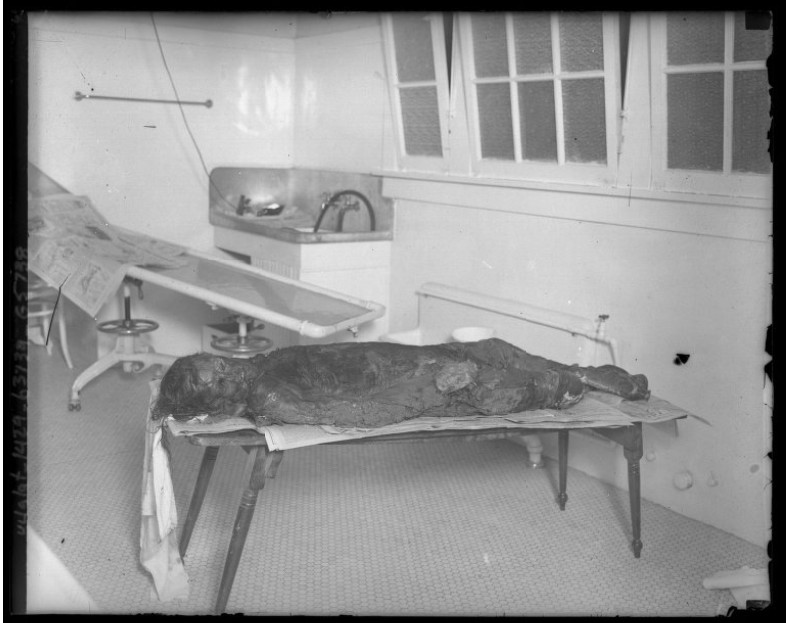
Grace in the morgue.
After hours of sparring with investigators and just as he was about to be taken from the cabin to the Strother & Dayton funeral parlor to view Grace’s remains, Thomas said: “I’m glad she is dead. I am glad she’s dead, because I am free.”
It was 3 a.m. when Deputy D.A. Davis and his associates arrived at the funeral home with Thomas.
Thomas walked right up to Grace’s ravaged body and said: “It doesn’t look like her.”
Then Thomas swayed on his feet and collapsed.
“It was a little bit of a hand.” He mumbled.
Thomas was taken to the front office, where he sat with a vacant stare for several minutes before recovering himself. He wanted to unburden himself.
Thomas said that on the night of the murder, he and Grace stopped at the Plantation Grill, where they argued, then they went to his office where they got a bottle of liquor and got “lit up.” While they were at the office, Thomas picked up a tube of Somnoform, a heavy anesthetic, and concealed it in his pocket.
Grace fell asleep in the car as Thomas drove out to the cabin. When they arrived, Thomas put a mask over her face, administering the Somnoform until she quit breathing.
After giving Grace the drug, Thomas told investigators: “I put cotton in her nose, and then I took that rubber bag off the Somnoform.”
They found the bag from the tube of Somnoform stuffed into Grace’s mouth, which was initially mistaken for a rubber glove. Thomas had used the cotton and the rubber bag to make sure that Grace “wouldn’t start breathing again.”
Before dumping Grace’s body into the cistern, Thomas stole $140 from her purse and relieved her of her jewelry. He gave his assistant, Dorothy Leopold, the diamond ring Grace had been wearing, as well as several items of expensive clothing.
Dorothy knew nothing about the murder and, in fact, she was staunch in her support of Thomas. She told reporters: “Of course, at first I did not believe that the doctor had killed Mrs. Young. But after talking with Mr. Harris (of the Nick Harris Detective Agency), I was satisfied he (Thomas Young) knew more about it than he had related. The fact that she had not communicated with Patrick was pointed out to me by Mr. Harris, and I told him I would do everything I could to find out for him and the officers.”
Police allowed Dorothy to speak with Thomas and she asked him if he knew where Grace was. “Why don’t you tell them?” she said. To which Thomas replied: “I can’t.”
The most revolting part of Thomas’ confession was the glee he took in having Patrick assist him in pouring cement on Grace’s grave. He thought it was a “good joke.”
Of course, the investigators wanted to know what had motivated Thomas to murder Grace. He said he’d killed her because after their fight she had slapped him and broken his glasses. It was enough to activate the murder complex.
“Someone was always imposing on me, beating me, verbally or physically. Yes, I was always the goat,” Thomas said.
NEXT TIME: Thomas Young’s fate.
This entry was posted in the 1920s and tagged Charles Patrick Grogan, Charles Reimer, George Contreras, Grace Hunt Grogan Young, Harold Davis, Nick Harris Detective Agency, Somnoform by Deranged. Bookmark the permalink.
Aggie was born in San Francisco on this date in 1902. She became a remarkable reporter and a city editor. Below are a couple of mementoes from her career.



I’m pleased to announce that my story, The Lady Vanishes: The Mysterious Disappearance of Jean Spangler, will appear in Mitzi Szereto’s newest true crime anthology, The Best New True Crime Stories: Unsolved Crimes and Mysteries.
Coming September 15, 2022.
Available for pre-order now.
To whet your appetite for the story, I created this short video.
On June 22, 2021, Writer’s Bloc and Chevalier’s Books hosted a virtual event celebrating the publication of James Ellroy’s new novel, WIDESPREAD PANIC.
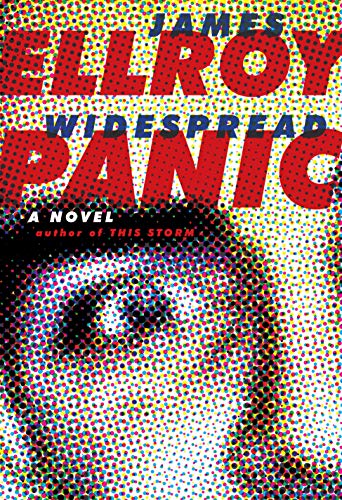
I was thrilled to participate on a panel with James Ellroy, John Anderson, Grant Nebel and Zoe Dean.
John Anderson and Grant Nebel are Ellroy scholars and enthusiasts who created the Ellroycast, and have written extensively about pop culture, film, and television. Zoe Dean is an award winning short story writer of crime fiction.
I’ve known James for years, and was one of several people who worked with him on the book, LAPD ’53.
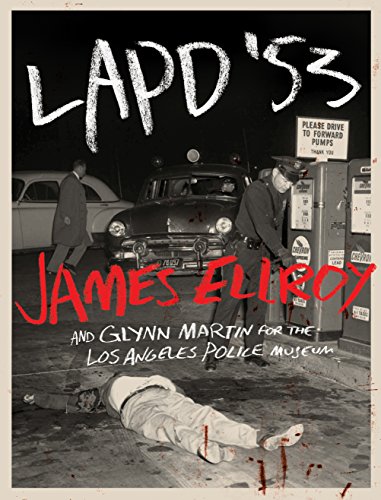
If you missed Ellroypalooza, or would like to see it again, here it is for your viewing pleasure.